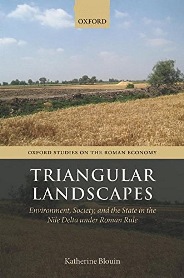| Main » Ad Board » ДРЕВЕН ЕГИПЕТ И АФРИКА » Икономика, стопанство и търговия |
| 02.07.2020, 19:48 | |
Монография за екологичните промени в ландшафта на Делтата на Нил през епохата на римското владичество. Проследява се редукцията в ръкавите през които реката се влива в Средиземно море от седем на само два - днешните Розета и Дамиета. Дава се комплексна оценка на човешката дейност като решаващ фактор в тази промяна и се анализират различните пътища за нейното въздействие върху природата. Основен материал за проучването дават запазените папируси от този период, най-вече тези от нома Мендес.
- на английски език, от MEGA, формат PDF.Сваляне с ляв бутон (downloading by left button) и после през бутона Download. АЛТЕРНАТИВЕН ЛИНК / ALTERNATIVE LINK: - на английски език, от Google Drive,формат PDF. Сваляне с ляв бутон (downloading by left button) от страницата на предоставящия сървър, после през бутона стрелка надолу/after by down arrow button.
| |
| Views: 502 | Placed till: 02.08.2020 | Rating: 0.0/0 | |

